Teaching and Learning

SUNY Erie Community College’s (ECC) Information Technology Program was recently honored as the Best Tech Team in Non-Profit/Education by InfoTech WNY as part of the organization’s annual Buffalo Emerging Technology Awards Showcase (BETAS) at Buffalo RiverWorks in May 2017.
“This award is exciting news for a program that’s been thriving for years,” said ECC President Jack Quinn. “Its faculty and staff have done a tremendous job in preparing our students for technology careers across Western New York, so this acknowledgement is deserved, and much appreciated.”
Competing in a category that...
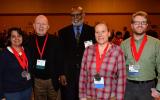
The League for Innovation prides itself on recognizing innovation and excellence in the community college. Colleges and institutions across the U.S. and abroad demonstrate their dedication to students and communities, and the following awards attest to the League’s support for the daily efforts of faculty, staff, administrators, and students.
League Awards
2018 Riegelman Awards for Excellence in Public Health & Health Navigation Education in Community Colleges: Open through October 31, 2017
2017 John & Suanne Roueche Excellence Awards: Open through December 15, 2017
2017 Terry O’...
Tags:
It is a glaring truth. No matter how broad the scientific research or how far academia have reached to date, science, technology, engineering, and math (STEM) fields have been and remain a man’s world. Although there have been some changes in the last few decades, for the most part, women and minorities still face disparities (Office of Science and Technology Policy and Office of Personnel Management, 2016).
There are many negatives associated with women and minorities’ limited participation in STEM fields, such as repression of creativity, loss of true innovation (Del Giudice, 2014), lower...
Tags:

As part of the reaffirmation process of the Southern Association of Colleges and Schools Commission on Colleges, Wake Technical Community College launched a Quality Enhancement Plan (QEP) initiative based on best practices in eLearning. The goal of the eLearning Preparedness Initiative across the College (EPIC) is to remove learning barriers and better support online student learning, persistence, and success. A broad cross-functional and multidisciplinary team of faculty and staff developed and implemented eLearning Quality Standards, an online student orientation, and a faculty...

Communication faculty often have a unique opportunity to hear students’ own stories. These stories permeate the work of learning public speaking. Faculty members at Pellissippi State Community College recently launched In Our Words, a public forum in which students share their stories with audiences beyond the public speaking classroom. Public speaking generally benefits both speaker and audience, and In Our Words certainly does that. Benefits also extend to the Communication Studies department and other areas of the college.
Process
Pellissippi State has, for years, had a robust faculty...

We live in a digital age, so we may assume that digital is always better. But that isn’t necessarily the case when it comes to audio recording. The new recording studio at Volunteer State Community College is state-of-the-art analog. Another room has home studio equipment. That may seem strange at a college with yet another studio that is fully digital and fully automated. The reason is simple: learning.
“The vision for our process is to have three different recording environments,” said Entertainment Media Production Director, Steve Bishir.
The original studio has a fully-digital, fully-...
Tags:

In 2012, the League established the John & Suanne Roueche Excellence Awards to celebrate outstanding contributions and leadership by community college faculty and staff. These awards are open to League Board and Alliance member institutions, and each year’s recipients are recognized in a series of activities and promotions, and honored at special events at the League's Innovations Conference each spring.
The 2016 Excellence Award recipients were recognized at the Innovations Conference in San Francisco, CA, March 12-15, 2017. Special events included an exclusive Excellence Awards...
Tags:
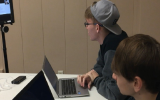
Marlie Burt was 75 miles away from fellow classmates when she worked on a group project last semester. Burt, who lives in La Harpe, Illinois, and attends classes at Carl Sandburg College’s branch campus in Carthage, collaborated with her classmates via a telepresence robot located on the Main Campus in Galesburg, where the other students in her police administration and management course met.
Burt attended the class by controlling the robot—affectionately named Sheldon, after The Big Bang Theory character—while sitting at a computer station at the branch campus. With Sheldon, distance was no...
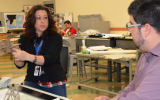
A U.S. Navy veteran with 25 years of service, Angela Muhammad is working toward a new career that’s close to her heart: building affordable homes for single parents and the elderly.
“I’ve done missionary work and I’ve seen how we have a deficiency in clean, safe, affordable housing,” said Muhammad, 50, a second-year student in Del Mar College’s Architecture/Drafting Technology program. “I’ve always had an interest in how things are built.”
“There’s a need for this program,” she continued, taking a break in the Architectural Design Studio, where she’s using glue and chipboard to make a small...
Tags:
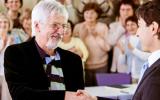
Congratulations to the 2016 recipients of the League's Innovation of the Year Award!
The League initiated the award over thirty years ago to recognize local community college projects and initiatives that reflect extraordinary achievement and the spirit of innovation and experimentation on which the League was founded. The competition provides an opportunity for League Board and Alliance member colleges to showcase their innovative programs, practices, policies, partnerships, and resources; to celebrate the dedicated educators who are responsible for such exceptional work; and to promote a...
Tags:
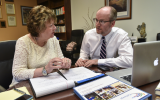
San Jacinto College has launched a general studies associate degree pilot program that provides significant cost savings to students who now do not have to buy traditional course materials such as high-cost textbooks.
In lieu of traditional print textbooks that can cost as much as $300 per copy, students who participate in the new program use digital open educational resources (OER) course materials which are free and accessible online. San Jacinto College full-time students previously paid approximately $700 per semester for printed textbooks, which amounts to nearly one-third of the total...
Tags:
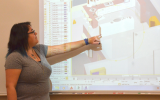
Bob Klepac is breaking down the notion that architecture means four walls and a roof. For example, he told a Del Mar College class one morning last summer that one of his former students is designing a meal tray for passenger jets at Boeing. “He’s making over $120,000 a year doing that,” he said.
Klepac, a technical drafting instructor, was a lively observer that day as students in his Technical Animation and Rendering class presented their final projects. The 12-week course introduced them to three-dimensional (3D) computer modeling and the software language of computer-aided design. Their...
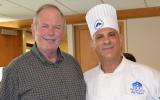
Move over kale; the latest trendy vegetable comes from the sea. It’s kelp!
Kelp is a slippery brown seaweed that grows in shallow waters along coastal areas. This unlikely ingredient is on the menu at Norwalk Community College (NCC), where the Hospitality Management and Culinary Arts programs have partnered with marine biologist Charles Yarish, Ph.D., to harvest kelp for research and to promote its nutritional benefits.
Kelp is a powerhouse of vitamins and minerals. It is used in many Asian cuisines and contains the highest natural concentration of calcium of any food source. It’s also high...
Tags:
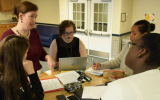
It’s crunch time on campus at Onondaga Community College (OCC). Spring semester final exams are just over a week away. In Professor Kristen Costello’s Microeconomics (ECO 204) class she’s discussing final project options with students. “You can do either a paper or a presentation,” Costello said. “If you choose a presentation you can do so as an individual or in a group of up to three people.”
Costello is holding class in the lounge of one of the college’s four residence halls. This particular residence hall is the home of Business majors who reside in one of the college’s Living Learning...

It’s a pitch meeting on Music Row in Nashville, the center of the city’s music industry. Young people are presenting a complete package for a new rap artist, Malik Deshaun, known professionally as Vantage. They screen a video, show features of a website, discuss the social media pages they have created for the release, and run through a business plan. Then, it’s off to the listening room to play the tracks. The bass rumbles and the drum beats are sharp. Heads nod in the room in sync with the rhythm. But these aren’t Nashville music pros presenting—they’re students from Volunteer State...

As higher education evolves to accommodate new forms of learning and new workforce needs, skills are being assessed across an ever-widening range of activities within the learning landscape. Campus-based and online degree programs; professional certificates; competency-based education; open online courses; professional development initiatives; cocurricular and extracurricular activities; and programs in service learning, information literacy, and entrepreneurship are just some of the higher education settings in which competencies worth recognizing are demonstrated or observed. Digital badges...

Nearly 30 percent of high school juniors and seniors in Colorado participated in concurrent enrollment, ASCENT (Accelerating Students through Concurrent ENrollmenT), or other dual-enrollment programs during the 2014-2015 academic year.
Arapahoe Community College (ACC) served more students (3,614) than any other two-year institution in the state during that time. ACC’s concurrent enrollment program is designed for high school students looking for a challenging academic experience while simultaneously earning high school and college credit.
“Concurrent enrollment is a great way for students to...
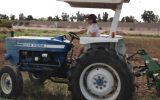
Beginning with the spring 2016 semester, Mesa Community College (MCC) began offering an Associate of Applied Science Degree in Sustainable Agriculture—the first of its kind in Arizona.
The Sustainable Agriculture degree provides students with both the technical and small business skills needed to manage or develop a small farm or agricultural business. The program is focused on small scale and urban agriculture with an emphasis on natural practices and sustainability. Courses include Field Crop Production, Livestock Production, Aquaponics, Integrated Pest Management, and Agricultural...
Tags:
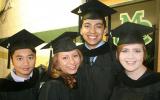
In the fall of 2009, the first cohort of more than 100 ninth-grade students were admitted into Early College High School at Midland College (ECHS@MC). The school focuses primarily on serving first-generation college students, those with a low socioeconomic status, and/or those whose ethnicities are underrepresented at the college level.
Today, Midland College (MC) and the Midland Independent School District (MISD) have recognized three cohorts of graduates from the successful program. Over 85 percent of those students received associate degrees from Midland College at the same time they...











